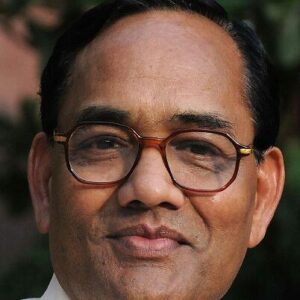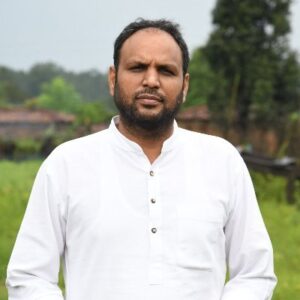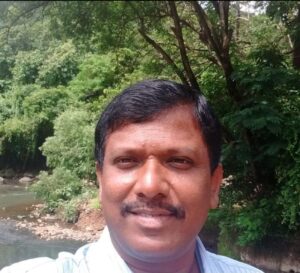Protecting environment a dangerous activity in India

Global Witness gathered and analysed 2020 data from around the world involving lethal attacks on environmental defenders, and discovered that an average of more than four people a week died while defending the environment (Photo: Wikimedia Commons)
On July 7, 2012, Ramesh Agarwal, environment and transparency activist who runs an internet café in Raigarh in central Indian state of Chhattisgarh, had just wound up his lunch when a few persons entered his office and engaged him in small talk. Before he could gather his wits, one of them whipped out a gun. Agarwal, who remembers the incident with absolute clarity nearly a decade later, says that the moment he saw the gun, he reacted with a reflex which ended up saving his life.
“I was sitting in my office and at that time 2-3 people entered the office and fired shots at me. The moment I saw them with guns I threw my cell phone at them that was right in front of me. Somehow, perhaps due to my reflex, they missed their target and the bullets hit me in the thigh,” recollects Agarwal while talking to Media India Group.
Agarwal, who had to be hospitalised for several corrective surgeries, including placing six metal rods to replace the shattered bones, says even today he needs a cane to walk.
Immediately after the attack, Agarwal had issued a statement blaming Jindal Steel and Power Company, a metals and power behemoth in India, of being directly implicated in the attack as Agarwal had been instrumental is leading a protest by tribals in Chhattisgarh against a second coal mine in the state which was to produce 4 million tonnes of coal every year and which would fuel a power plant owned by JSPL.
Agarwal used the Right to Information law to gather information on the project and involved both the then environment minister as well as the National Green Tribunal (NGT), which adjudicates all environment-related cases. It was due to his persistent efforts to dig information on the true nature of the project that while Jairam Ramesh, the environment minister, cancelled the project and the NGT, too, revoked all permits for the mine to start operations. Agarwal says this could have triggered the attack which came only a few months later.
“The reason they attacked me was because of my work related to environmental issues. There were 2-3 industries who might have been impacted with our work and possibly they suffered huge loss and that is why they attacked us. We mostly work on issues related to coal mines or thermal power plant. At that time, I had complained to the ministry of forest and environment (MOEFCC) about Jindal Power Plant and because of that the ministry rejected their 2400 megawatt power plant. That was a major setback for them. The second reason was they had received coal mines and we had gone against that to the NGT and there the NGT quashed their public hearing. So they had restart the entire process. There were several other instances that happened,” says Agarwal.

Ramesh Agarwal was awarded the Goldman Environmental Prize for Asia in 2014 for his work on environment
Unfortunately for India’s eco-defenders, Agarwal is hardly an exception and is just one of the many environmentalists who have faced serious violence and death threats for carrying out their work. Protecting environment has become a very dangerous business, they say.
Another environment activist, Stalin, director of Vanashakti, a non-profit environmental NGO based in Mumbai, says he has been assaulted not just once but several times.
“The first time I was attacked was by goons of a group of builders who were trying to destroy mangroves to create a township in Mumbai. The second attack happened when I was in the Western Ghats in the Sindhudurg area where we had been fighting for protecting a wildlife corridor which is used by all kinds of wildlife in a crucial forest belt, which ironically is also being eyed by mining companies. We kept the miners at bay for the last 10 years. They tried to spread misinformation among the villagers about me and when I was invited to clarify the doubts in the minds of the people but actually they had set a trap for me. They had organised a group of more than 100-150 people to attack me. This attack was orchestrated by a person who is a minister today,” Stalin tells Media India Group. He says that even though he does not have any direct evidence against the leader, but adds that there are enough voices on the ground that will say so.
“The third attack happened when I was inspecting a wetland which was being reclaimed. My car was tailed and there was an attempt to stab me. These incidents I have reported already and investigations are underway. I do not care much about it as the work of conservation has to go on. Mercifully I didn’t suffer any physical harm. Just before things could get nasty I was whisked away to safety by well-wishers,” says Stalin.
Agarwal and Stalin are just a couple among hundreds of environmentalists who have been attacked in India and elsewhere in the world. And not everyone turned out to be as fortunate as them to have been able to live and talk about the attacks. And the number of violent attacks has been climbing sharply.
According to a report by environmental and human rights watchdog Global Witness, a record 227 people were killed last year protecting forests, water and other natural resources under increasing stress from climate change, making 2020 the deadliest year on record for environment defenders. The report gathered and analysed 2020 data from around the world involving lethal attacks on environmental defenders, and discovered that an average of more than four people a week died while defending the environment.
Global Witness reported that most of the killings happened in Latin America. Colombia was the worst-affected country, the group said, with 65 defenders killed for either protecting indigenous land or defending forests and their coca crops. Mexico, where a third of the attacks were linked to deforestation, ranked second with 30 killings.
Seven of the 10 deadliest countries for land and environmental defenders were in Latin America, with 165 killings recorded, though Global Witness said the number was “almost certainly” an underestimate. After Colombia, Mexico had the second highest number of deaths globally, with 30.
It was followed by the Philippines (29), Brazil (20), Honduras (17), the Democratic Republic of Congo (15), Guatemala (13), Nicaragua (12), Peru (six) and India (four).
Akshay Deshmane, a journalist with The Morning Context, covering mainly environmental issues in India, says that of the four reported cases cited in Global Witness report, two are those of ecologists who tried to use the information and transparency law (RTI) to dig up the truth about illegal mining of sand from riverbeds, a very widely prevalent criminal practice across India as the sand is used by construction industry.
A report by South Asia Network on Dams, Rivers and People released last year shows that at least 193 people have died during illegal sand mining operations across India from January 2019 to November 15, 2020. The report, collated by a network of organisations working on rivers, shows that in this period 23 farmers and villagers; 5 reporters and activists and 11 government officials, including forest guards, policemen, revenue officials, mining personnel and district officials have been killed by illegal miners.
Ecowarriors in India face threats from all around
Most activists say that the dangers faced by them while working in India are multifaceted and the attacks on environment defenders, including fatal attacks, are definitely far more prevalent.
“What I can say from my years of experience is that these are the figures that are reported. The actual number of deaths are much higher. Because when they report it as the death of an activist it reflects on the state government very poorly. So generally, this is covered up. But protecting forests or environment is a very dangerous business in India. I myself have been attacked thrice. I know first-hand how it feels,” says Stalin.
Not just that, they could come from practically any quarter – be it a large company especially those engaged in mining and other environmentally-damaging activities, or a neighbourhood goon working for a local mafia pillaging natural resources like timber or sand from river beds. Frequently, the threat, though not necessarily violent, also comes from the government, adding that even though the government may not resort to violence, it often turns a blind eye to violent attacks on the ecowarriors.
Stalin says that either deliberately or through lackadaisical attitude, the police fail to protect environment activists. “When you first file a complaint with the police, first thing they will call you to the local police station. Then you spend the full day giving your statement there. Once that statement is done, then they know that you are based somewhere far away. They will keep calling you that I have caught one person, come and identify him. They make it so miserable that you really don’t want to have any part of it. Because ultimately those guys are protected by big people. But the fact that the attacks continue on people who try to protect forests,” he recounts.
But it is not just the activists, even government officials, especially forest rangers who are sincere about their duty, have been attacked. Stalin remembers an incident that happened about five years ago near Mumbai where a forest guard was trying to prevent land mafia from encroaching upon forest. “He was lynched and had his head smashed with a stone. It was a brutal killing of a government employee. And yet, what was the action taken? Some people were caught and then they were released. I don’t think anyone has paid the price for that cold-blooded murder ever,” Stalin tells Media India Group.
Alok Shukla, convenor of Chhattisgarh Bachao Andolan, says that even the locals, especially the tribal populations in states like Chhattisgarh, are very vulnerable in face of large companies that lust after the rich natural resources in tribal areas. “It is not just the environmentalists who risk their lives to protect the environment, but the tribal people too risk their lives, even if it is for their land or livelihood. The numbers of those who have been killed might be higher as there are many incidents that do not get reported,’’ Shukla tells Media India Group.
“I have been working for the past two decades and in these years, I have seen that the corporates try to threaten you in different ways. In Bastar, (home to one of the densest large forests in the country, and perhaps the world), the tribal are often attacked while they are trying to protect their resources,” says Shukla.
Shukla has been rallying the tribals to defend their territory in Hasdeo Arand, which is a tribal area with a dense forest, sitting atop over 5 billion tonnes of coal. This land has been allocated, over shrill protests by locals and environmentalists from across the country, to the Adani Group for starting a coal mine. Shukla says that since he is opposing their venture, the Adani Group has been trying to harass him in different ways. “In Chhattisgarh, it is very easy for people to give you the name of Maowadi (a Naxalite, a banned extreme-left wing militant group). So, they threaten you in different ways and try to remove you from that movement,” Shukla says.
He goes on to add that generally when activists are attacked, it is done by a large group of people since it is difficult to pinpoint one person and hence, they all get away scot-free.
“But, of course, there are targeted attacks also where someone can be killed in a forest area and no one will find out. That is a risk we live with all through our lives because wherever we go most of these places are desolate,’’ says Stalin.
Big business becoming a bigger threat
Some activists like Shukla say that while the threats come in equal doses from all sides, it is the big business that is becoming a bigger menace for those defending environment due to their sheer power, citing the example of Adani Group, which has grown multiple times in size since May 2014 when Narendra Modi as Prime Minister, thanks to dollops of favours distributed by Modi.

Alok Shukla, convenor of Chhattisgarh Bachao Andolan, feels that the corporates pose a bigger threat towards the environmentalists
“Both corporate and government are equally responsible in posing a threat to environmentalists. For instance, in Hasdeo, we see that the coal blocks have been allotted to the state government-owned companies and they have done deals with Adani Group. But the corporates threaten us more as they do not have any boundaries. It will not compromise with its profit. The government will try to harass you by sending you to jail, but the corporate knows no boundary. Moreover, today there is a tie up between the government and the corporate. This is even more dangerous as both stand hand in hand,” says Shukla.
Other ecowarriors believe the same. “The risks involved are both from government and corporates. Depends on what you are covering. They will put some false allegations and get you engaged with matters of the court and even after that if the activists don’t stop, they will get them killed,” says Agarwal, who is a member of Jan Chetana (Public Awareness), a forum of people to spread awareness about the dangers to the environment and livelihood of the tribals and locals in Chhattisgarh stemming from mining, logging and other industries.
For his work, Ramesh Agarwal was awarded the Goldman Environmental Prize for Asia in 2014. The award is also often referred to as the Green Nobel as ecologists from around the world hold it in high regard. But winning the award has not made Agarwal or other environment activists any safer.
“This is a risk that people working for environment have to take. Not just in India, but this is happening all over the world. The people who were arrested for attacking me, some of them had direct contact with Jindal. All of them have since been freed. We do not care anymore if we will be attacked again or not. I was put behind bars for two and a half months before 2012. The vice-president of Jindal had apparently complained against me back then,” says Agarwal.
Poor prosecution and zero conviction
The environmentalists say that even though their jobs are becoming riskier by the day, the governments do not seem to be waking up to the dangers faced by them as most cases are not even registered, let alone investigated properly and the accused getting convicted. Stalin says that the prosecution of environment-related crimes does not seem to be a priority and this is one of the reasons behind the flagrant rise in number of attacks on environment activists.

Akshay Deshmane, a journalist covering environmental issue in India feels that the mainstream media is failing to report on attacks on environmental defenders
He goes on to say that the attackers have now become so brazen that they even act in broad daylight in crowded metropolitan cities, even though there are more surveillance cameras and there are more people around. “The risk of an eyewitness popping up also doesn’t deter people from killing them. If they want to kill, they will. There are so many activists who were killed while going for morning walks,” he says.
Deshmane says that even as attacks become more frequent and brazen, the mainstream media seems to be failing to report on the attacks on environment as well as the activists. “In India things are progressively getting more difficult for dissent as such. In that overall context environment defenders are vulnerable. It is also becoming difficult for journalists. Because previously the mainstream platforms that relatively allowed some space and there was some tolerance in some pockets of the mainstream media, now even those have almost entirely gone. So whatever journalism you see on environment related issues is mostly in the alternative press and digital media especially. So it is becoming more and more difficult to sustainably keep writing and pursuing journalism of this kind because the environment is actively hostile.”










